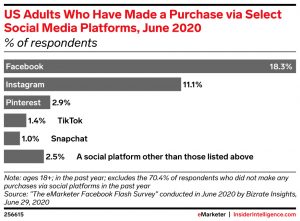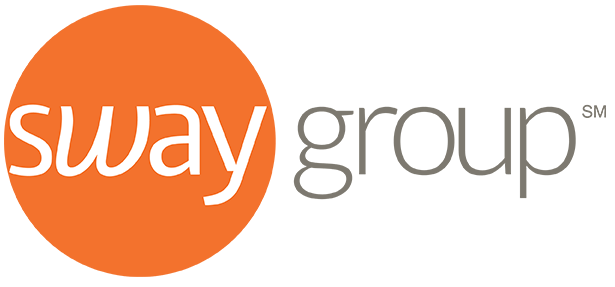According to Emarketer, U.S. Consumers spent a total of $586.92 billion on eCommerce in 2019, which was up 14% from 2018. 2021 is predicted to be even higher, especially since COVID-19 has pushed many shoppers to shop online exclusively. Where do customers go to find products or services? Social media platforms!
In today’s digital society, investing in paid social media advertising is necessary for brands to succeed. With 1 in 5 people following a brand on social media within the past month, the audience and revenue potential are huge if you invest in paid social media advertising.
 The advantage of paying for social media exposure instead of organically attracting customers is the message frequency, sustainability of your social media campaign, and the speed it attracts potential customers. On the other hand, organic social media can take multiple days or months to build, especially since the algorithms are frequently changing. With paid advertising, your campaign can get started with an organic boost that regular posts won’t be able to match. You’ll find the business you’re looking for with paid social media.
The advantage of paying for social media exposure instead of organically attracting customers is the message frequency, sustainability of your social media campaign, and the speed it attracts potential customers. On the other hand, organic social media can take multiple days or months to build, especially since the algorithms are frequently changing. With paid advertising, your campaign can get started with an organic boost that regular posts won’t be able to match. You’ll find the business you’re looking for with paid social media.
What is paid social media?
Paid social media is when a company pays a platform to highlight their products or services with a specific audience. Each social media channel provides different types of content and can reach different target markets.
LinkedIn is the place for professionals looking to network. Pinterest offers DIY solutions in a visual format. Facebook continues to be the most used social media platform and offers long-format posting capabilities. Instagram is all about visual content, and Twitter provides shorter to-the-point visual content. TikTok continues to gain popularity and is a great place to reach a. younger audience. The price per platform differs depending on who you’re trying to reach and the purpose of your paid advertising.
When you choose your social media of choice, you’re able to choose who your target market is so that your products can be matched with the people who would be interested. Social media platforms can gather data on their customers, everything from their gender, age, socio-economical status, location, shopping habits, likes, dislikes, and so on.
When you choose paid social media advertising, you can match your brand and product with the right customer. This results in higher sales, for a smaller investment.
Do People Really Buy from Social Media?
Customers are likely to respond to social media advertisements. According to a recent study, 18.3% of customers bought from a Facebook advertisement, 11.1% bought from Instagram, 2.9% from Pinterest, 1.4% from TikTok, and 1.0% from Snapchat.

Social media is not going anywhere, and paid social media buying is predicted to increase. If you want customers to purchase from your business, paid social media is the way to go.
What is the difference between organic and paid social media?
Organic social media refers to the free content that all users, including businesses and brands, share with each other on their feed. This could include content such as posts, photos, videos, memes, stories, and so on.
Brands can use the free tools offered on each platform to check analytics, reach, and adjust their strategy to increase their reach. However, depending on the length of your digital marketing campaign or procedure, you can find that you’re unable to reach your audience or make as significant of an impact as you had hoped for. Plus, with ever-changing algorithms, it’s easy to have your content lost among the thousands of other brands offering similar products or services.
 Paid social media is also known as paid social media advertising. Advertisements in multiple formats, such as videos, images, or text, are displayed to specific demographics or audiences on distinct social media platforms. Ads can be optimized for the number of clicks or views. Using paid social media helps your brand’s products or services stand out from your competition.
Paid social media is also known as paid social media advertising. Advertisements in multiple formats, such as videos, images, or text, are displayed to specific demographics or audiences on distinct social media platforms. Ads can be optimized for the number of clicks or views. Using paid social media helps your brand’s products or services stand out from your competition.
Where to start?
With the variety of social media platforms to choose from, you have many options to design your social media paid advertising campaign. If you’re unsure what will work best for your company, it’s best to contact a professional organization, like Sway Group, to help determine the best social media platforms to meet your goals. If you choose to do your own paid advertising, you’ll need to remember the following to have a successful strategy:
- Determine Your Marketing Goal: What are you trying to accomplish with your paid social campaign? Do you need more click-throughs, conversions, followers, a more extensive email list? Having a social media campaign without a goal is meaningless because you’re unable to track your progress.
- Define Your Target Audience: What does your audience like to do? What is their gender, age, nationality, likes, dislikes, etc.? You want to be specific about the audience you want to attract.
- Set A Budget: Understand how much you feel comfortable spending. Choose too little of a budget, and you won’t have enough reach to meet your marketing goals. Choose too big of a budget, and your company may feel the impact.
- Analyze Posts for Success: Once your campaign has begun, you need to constantly evaluate your success to make sure you get the most bang for your buck. If you’re not reaching your goals, adjust your strategy and try again.
What are the benefits of including paid social media in your marketing mix?
1. Paid social allows for audience targeting
The ability to target your ideal customer is the top reason to add paid social media to your marketing plan. There are three main ways to target your audience for a campaign.
- Based on interest – If your company sells women’s fashion items, it’s essential that you’re only reaching customers who have an interest in women’s fashion. Using interest-based audience targeting can help expose your products to those interested in them and convert them to paying customers.
- Based on location – If your services or products are only for customers in specific areas, then it’s necessary that you’re not wasting money to advertise to those outside of those areas. For example, if you sell roofing services in Utah, you don’t want customers in Florida to find your content because they’re not your target audience. Using location-based audience targeting ensures you’re spending money converting the right audience.
- Retargeting – On some platforms, like Facebook or Instagram, you can retarget people who have already viewed or interacted with your content. Repeated exposure to those who already have shown interest in your products helps solidify your brand in their consideration set.
 2. You can reach a larger audience and build brand awareness
2. You can reach a larger audience and build brand awareness
When you post organically through your social media, you’re not likely to reach a large audience, sometimes not even reaching your current followers. Using paid social media advertising can help expose your products to a wide range of potential customers around the world.
3. Promote your brand’s content based on a marketing goal
You can optimize your social media advertisements to fit your marketing goals, whether that means reaching a specific number of clicks, views, or engagement, depending on your KPI.
4. Paid social is cost-effective
Paid social media marketing is the most cost-efficient way to reach new customers. The initial signing up and using social media profiles is completely free. The cost of social media advertising is much lower compared to traditional television, magazine, or billboard marketing. Companies see a greater return on their investment because it’s simple to adjust your target market, budget, and strategy to fit your marketing goals.
5. You can gain consumer insights
Using paid social media marketing will help companies gain the advantage of learning more about their audience and their customers’ needs. Social media provides a way to talk directly to your audience, receive information on customer’s opinions and interests, as well as monitor activity that you wouldn’t know about if you didn’t invest in social media marketing. Plus, the more you invest in your paid social media marketing, the more you’ll understand your demographics of your customers to help fine-tune your marketing. This increases the number of conversations you’ll have every campaign.
Influencer Marketing and Paid Media
While paid for by brands, influencer marketing content isn’t paid social media but rather sponsored content. Sponsored content has the same limitations as organic content. It will only reach a portion of the influencers’ followers, and isn’t guaranteed to have the reach you need.
To make campaigns targeted and strategic, Sway Group layers paid social media to every influencer campaign. This allows us to be laser targeted with a brand’s audience. Our paid social advertising can also:
- Raise brand awareness and attract new followers
- Promote a new product, deal, content, event, etc.
- Generate leads
- Drive conversions (including e-commerce sales)
Use Social Media Advertising for Your Business or Company
Creating a social media advertising campaign can seem complicated or overwhelming, but it doesn’t have to be. Sway Group can help you to combine your social media goals with your influencer campaign, resulting in ultimate success.

